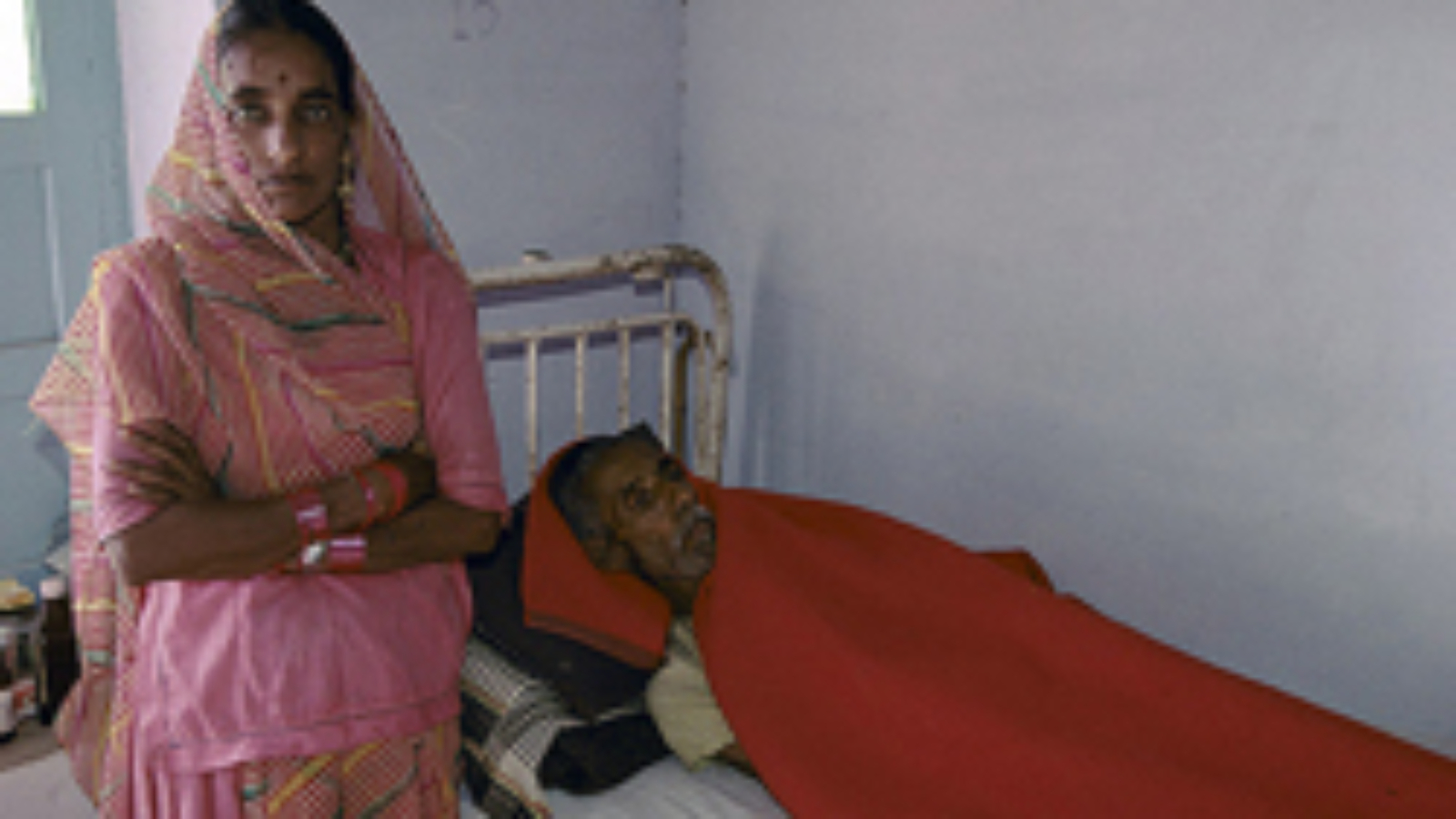Health care in India is lacking. While 90 percent of the population is uninsured, the government is responsible for just 17 percent of health care spending. In fellow BRIC nations Brazil and China, that number is 40 percent. India also has the dubious distinction of being one of only four countries in the world where polio has not yet been eradicated (the others are Pakistan, Nigeria and Afghanistan). And in a July 14th white paper entitled “The Quality of Death: Ranking end-of-life care across the world,” the Economist Intelligence Unit (EIU) ranked India’s end-of-life care last out of 40 countries—30 OECD members and 10 developing nations (a charted breakdown of India’s score appears below). “In India less than 1 percent is spent on healthcare so it’s not only palliative care that suffers,” the EIU quotes MR Rajagopal, the chairman of a Kerala health clinic, saying. “There is no public funding, there is no socialized medicine and the same holds true for palliative care.” As a result, and as the EIU scoring shows, medical costs can be seriously burdensome; they plunge some 20 million Indians into poverty each year.
Part of India’s end-of-life care problem might be cultural. One of the EIU report’s recommendations for improving hospice and palliative care is to combat “perceptions of death, and cultural taboos.” The EIU gave India a score of 2/5 in public awareness of end-of-life care, which the report attributes in part to Indians’ reluctance to openly discuss death and dying. This may come as a surprise in light of Hindu beliefs about reincarnation, but as Dr. Rajagopal explains, “When it actually happens to somebody in your family, you deny it and don’t want to talk about it…[and] don’t want the patient to be told that they’re dying so they prevent open communication with the patient.”
The EIU also rated each of the forty countries on availability of painkillers on a scale of one to five. Again, India scored abysmally, receiving a one—the lowest score of all since every other country received at least a two. Dying in India means a lot of suffering.
Kerala: A Shining Example?
Yet Indians need only cross state lines to alleviate their pain. Although the EIU report condemns India’s palliative care system as “lamentably poor” overall, it highlights the Indian state of Kerala’s as a successful model for the rest of the world to follow.
Kerala takes a uniquely community-driven, holistic approach to end-of-life care. Rather than relying solely on the governmental and medical sectors to deliver services, Kerala has instituted a program called the Neighbourhood Network for Palliative Care (NNPC). The NNPC incorporates trained community volunteers who give the dying moral support and financial advice—the idea being that companionship can be just as relieving during a person’s last days as medicine. Program funding also comes directly from the community, with local donations accounting for 56 percent of the money that goes into the NNPC.
So at the same time as India lags behind other countries, it has incubated a pioneering end-of-life care system that is being studied and copied around the world—including in Switzerland, which ranked well above India at 19th on the EIU’s list. In her articleabout Indian health care for our summer issue, Sandhya Srinivasan points out that while India’s top, state-of-the-art hospitals are highly sought after by medical tourists, most of its population receives limited, poor quality treatment. India’s palliative care follows a similar pattern—on the one hand, it is an emblem of progress and innovation, on the other, much of the population is slow to see its benefits. When it comes to health care, India needs only to catch up to itself.
The Rest of the World
For the Upfront section of our Summer 2010 issue, World Policy Journal looked at the statistics shaping the future of global health. We found some interesting numbers. By 2030, 75 percent of all deaths will result from non-communicable diseases; heart disease will be the world’s top killer; 12 million people will die each year of cancer; 13 percent of the world’s population will be over the age of 65.
To properly take care of people in the 21st century, the world’s health care systems will require some reshaping. With people dying older and from longer-term diseases, there needs to be more of a focus on hospice and palliative care to ease their suffering. Even in the world’s most developed countries, policymakers and the media tend to concentrate attention and resources on other health care concerns. Currently, the Worldwide Palliative Care Alliance estimates that a mere 8% of those in need of hospice and palliative care receives it. If there aren’t structural changes soon, that number is only going to shrink.
***
The EIU study derived India’s overall end-of-life care ranking of 40th place from four factors:
| Factor (and Weighting): | India's Ranking: | India's Score |
| Basic end-of-life environment (20%) | 39/40, trailed by far less-developed Uganda | 1.3/10 |
| Availability of end-of-life care (25%) | 35/40, with every other BRIC nation behind it | 1.3/10 |
| Cost of end-of-life care (15%) | 39/39, tied with Mexico for being the most expensive on the patient | 1/10 |
| Quality of end-of-life care (15%) | 37/40 | 2.9/10 |
| Overall end-of-life care | 40/40 | 1.9/10 |
-Caroline Soussloff
Photo courtesy of World Bank / Curt Carnemark and the Creative Commons license.
